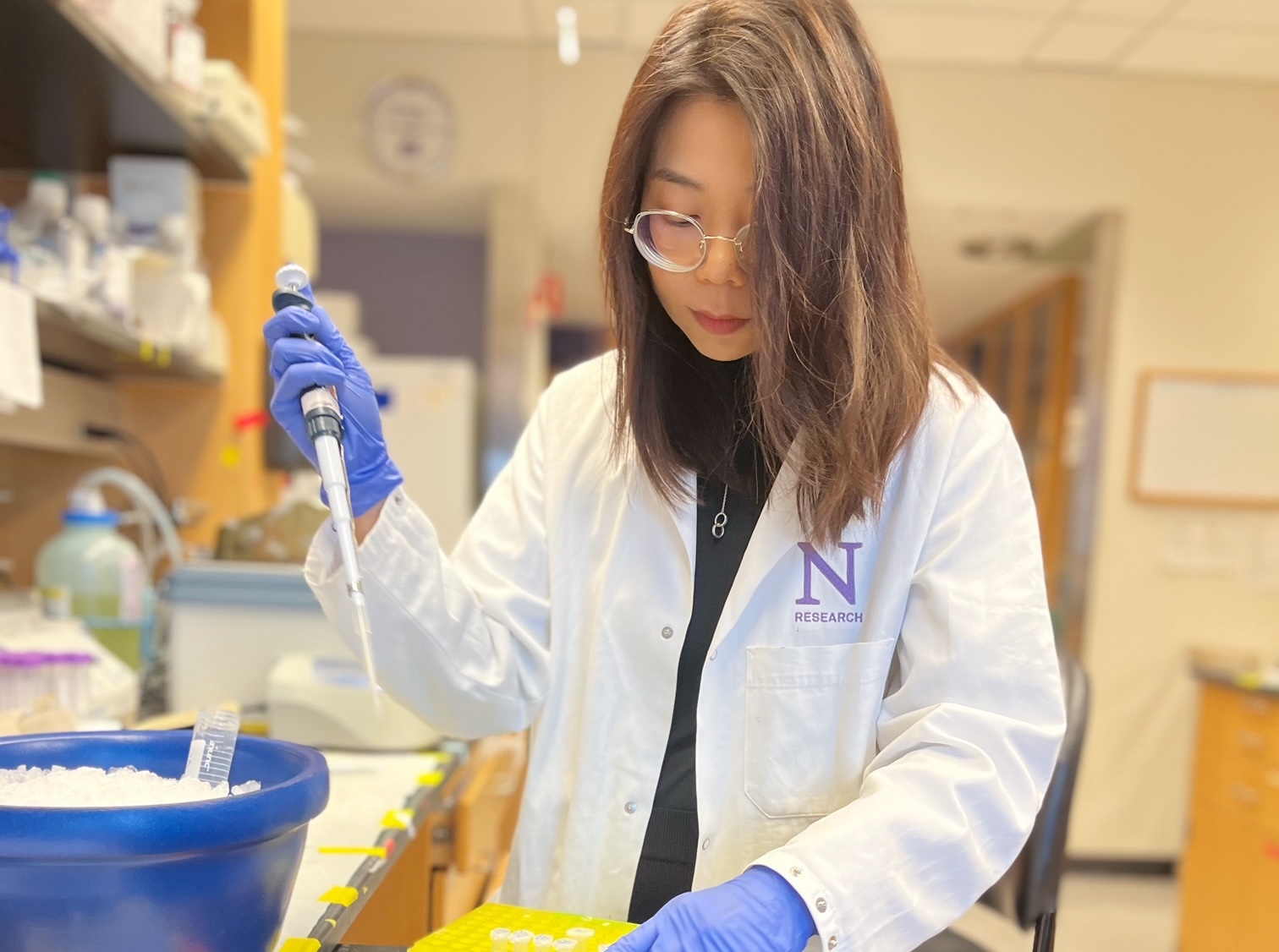Ovarian cancer is not a single disease, but rather a group of diseases classified by type and subtype. And while they all affect the ovaries, they are quite unique in terms of origin and prognosis.

Image: Atrium Health
High-grade serous ovarian cancer (HGSOC) is the most common subtype, accounting for the majority of diagnoses, and typically involving a first-line treatment of debulking surgery followed by chemotherapy. However, there are many rare ovarian cancer subtypes that differ greatly in their treatment.
Scientists continue to study rare ovarian cancers in order to better understand them and develop new therapies that will more effectively treat them. “These are really the unusual types of [ovarian] cancers that we see. They are managed very differently both surgically and from a chemotherapy and immunotherapy perspective,” noted Dr. Jubilee Brown of Levine Cancer Institute, Atrium Health. This article contains information presented by Dr. Brown at OCRA’s 2022 Ovarian Cancer National Conference.
Epithelial Ovarian Cancer Updates 2022
Epithelial, which arises from the surface of the ovary, is the most prevalent type of ovarian cancer and includes the HGSOC subtype mentioned above. However, there are several rare subtypes that are also included in this category: low-grade serous ovarian carcinoma (LGSOC), mucinous, and clear cell.
- Low-grade serous ovarian carcinoma (LGSOC) does not respond well to chemotherapy due to the pathways involved in this subtype. “Different pathways are active in low-grade serous carcinomas compared to high-grade serous carcinomas,” Dr. Brown explained. As such, scientists have been investigating other areas of treatment, which has resulted in promising breakthroughs. “We’ve made really a lot of progress in the last several years due to MEK inhibitors and hormonal therapy,” Dr. Brown noted.
MEK inhibitors are a type of targeted therapy that blocks specific proteins, known as MEK1 and MEK2, which are involved in cell growth and survival. One MEK inhibitor of note when it comes to treating LGSOC is trametinib, which has been studied in an international trial known as GOG-0281. Researchers in the US and UK evaluated the efficacy of this therapy in patients with recurrent or progressive low-grade serous ovarian or peritoneal cancer. “In this trial, there was a significant benefit to the MEK inhibitor compared with conventional chemotherapy. The group of patients treated with trametinib did significantly better than patients who had standard-of-care chemotherapy,” Dr. Brown said. “MEK inhibitors now have lots of data behind them; these should be considered a new standard-of-care [therapy] for patients with low-grade serous carcinoma in the progressive or relapsed arena.”
Hormone therapies also show promise as a new avenue for treatment, including an aromatase inhibitor known as letrozole. Aromatase inhibitors are used to block the formation of a natural estrogenic hormone known as estradiol, essentially lowering the amount of estrogen produced by the patient. Letrozole is currently being studied in a trial known as NRG-GY019 that focuses on patients with stage II-IV low-grade serous carcinoma of the ovary or peritoneum. Researchers are comparing how well letrozole works as a monotherapy versus in combination with the chemo treatments paclitaxel and carboplatin. “This trial is going to tell us [if] we are going to totally go away from chemotherapy and instead maybe just use letrozole alone for our patients with low-grade serous carcinomas,” Dr. Brown said.
- Primary mucinous ovarian carcinoma is oftentimes difficult to diagnose accurately, as it is not always clear whether the tumor is benign, borderline or invasive. “Determining that is a little bit problematic sometimes and hard to determine at the time of surgery,” Dr. Brown noted. “These are tough tumors to study because a lot of times they’re identified incorrectly, either from where they started, the stage, the cell type, whether they’re invasive or not.” Similar to LGSOC, mucinous ovarian carcinoma does not respond well to conventional chemotherapy. However, it has been challenging for researchers to study other potential courses of treatment in depth, particularly due to the difficulty in accurately diagnosing this subtype. Dr. Brown explained that the GOG-0241 trial, which was focused on testing gastrointestinal regimens as a possible therapy, had to close early in part to not being able to enroll enough patients — and that many of those who were enrolled had actually been misdiagnosed. “If we do [conduct] clinical trials in the future, a central pathology review is absolutely needed,” Dr. Brown said.
- Clear cell carcinoma of the ovary (CCC) differs in various ways from the two rare subtypes discussed above, with one notable distinction being that 40% of CCC tumors involve mutations in the PIK3CA gene. This gene plays a crucial role in making one of the proteins in an enzyme called phosphatidylinositol 3-kinase (PI3K). All enzymes categorized as kinases help regulate different functions of human cells, such as metabolism, division, cell signaling and survival. These findings and other molecular insights into clear cell carcinoma of the ovary have informed clinical trials focused on this subtype, as Dr. Brown explained. “In these tumors, we really looked at this different arm of targeted therapies,” she said.
Potential treatment options for clear cell carcinomas that have been tested include inhibitors that block kinases. Because kinases are more active in certain cancer cells, blocking them can prevent some tumors from growing, according to the National Cancer Institute. Some kinase inhibitors also slow the growth of blood vessels, a process that can work to fight cancer by essentially starving the tumors.
Sunitinib malate, temsirolimus and dasatinib are three different kinase inhibitors that have been tested, but none were shown to be successful in the treatment of clear cell carcinoma patients. In the GOG-0254 trial, sunitinib malate was given to 30 patients but resulted in a progression-free survival of just 2.7 months. Temsirolimus was evaluated in the GOG-0268 trial as first-line therapy for the treatment of stage 3 and 4 clear cell carcinoma of the ovary. It was given in combination with paclitaxel and carboplatin but showed “basically no difference compared with historical controls in any patient population we’ve studied,” noted Dr. Brown. And finally, when dasatinib was tested in the GOG-0238 trial, the researchers saw “no responses in this group,” according to Dr. Brown.
Scientists are continuing to explore other types of kinase inhibitors to treat CCC, however, with drugs including cabozantinib, nintedanib and lenvatinib currently being evaluated in clinical trials. Other potential therapies for clear cell carcinoma patients are also being investigated in ongoing studies, including immune checkpoint inhibitors. These drugs block proteins known as checkpoints that become programmed by cancer cells to keep certain white blood cells from attacking the tumor.
One clinical trial highlight of note that shows promise for various rare epithelial ovarian cancer subtypes is the GOG-3051 or BOUQUET trial. This ongoing study, which began in October 2021, focuses on biomarker-driven therapies for patients with persistent or recurrent rare epithelial ovarian tumors. As Dr. Brown explained, this study is informed by the data received through genomic testing of these rare tumors. “Now we have a trial to actually look [at] and say, ‘can we find active drugs for you?’ This is incredible,“ she noted, explaining that even patients with tumors so rare that trials did not previously exist for them can be included. “We can use that molecular profiling information that we get. And then for these patients with rare epithelial tumors who previously have had no good response and no good options when they recur, now we have targeted therapies [to test],” Dr. Brown said.
Ovarian Germ Cell Cancer Updates 2022
Germ cell is a rare type of ovarian cancer that is named after the reproductive cells that form eggs in the ovaries. There are various subtypes of ovarian germ cell cancer — including dysgerminomas, immature teratomas, and yolk sac tumors — but all tend to develop in teenage girls and young women. “Fertility becomes really important in these patients,” Dr. Brown noted, explaining that typically one ovary/fallopian tube can be left intact, along with the uterus, when surgical treatment is performed for this type of cancer. “We can [also] use assisted reproductive technology to preserve eggs beforehand so that we can effectively treat these patients and still maintain their fertility,” she said.
- Dysgerminomas and immature teratomas are often diagnosed in early stages and historically have been treated with surgery and the BEP regimen, which is a chemotherapy combination consisting of the drugs bleomycin sulfate, etoposide phosphate, and cisplatin. The only exceptions have typically been patients diagnosed with stage 1A, grade 1 pure dysgerminomas or stage 1A, grade 1 pure immature teratomas, and they have received surgery alone as treatment. However, a shift is beginning to occur in which studies are evaluating if all patients diagnosed with dysgerminomas and immature teratomas in early stages would be better served by undergoing surgery and then being kept under surveillance instead of receiving chemotherapy. “Specifically, there is this AGCT 1531 clinical trial that is looking to define that low-risk germ cell observational cohort so that hopefully we can omit toxic chemotherapy in about 85% of patients who wouldn’t otherwise need it, catch the 15% when they recur, and successfully treat them (with BEP chemotherapy) only if they recur,” Dr. Brown said.
- Yolk sac tumors are typically more aggressive than dysgerminomas and immature teratomas, so chemotherapy continues to be a standard part of treatment for this subtype. “We also are looking at neoadjuvant chemotherapy,” according to Dr. Brown, who noted that this treatment is being considered for advanced-stage yolk sac tumors specifically. Neoadjuvant therapies are those given before the primary treatment, so the chemotherapy would be administered with the aim of shrinking the tumor before the surgical treatment is performed.
Ovarian Stromal Cancer Updates 2022
The rare cancers categorized as ovarian stromal tumors develop in the cells that make up the connective tissues that support the ovaries. The two most-common subtypes of ovarian sex-cord stromal cancers are granulosa cell tumors and Sertoli-Leydig cell tumors.
“Systemic therapy has changed tremendously,” noted Dr. Brown, who explained that progress is being made in replacing the long-used treatment of BEP (the chemo combination of bleomycin sulfate, etoposide phosphate, and cisplatin) for those sex-cord stromal cancer patients needing adjuvant therapy. Recent research findings show promising results for the use of the less toxic chemo combination of paclitaxel and carboplatin. The GOG-0264 trial, in which Dr. Brown was the principal investigator, evaluated the effectiveness of paclitaxel and carboplatin in comparison with BEP for the treatment of patients with newly diagnosed advanced or recurrent chemo-naive ovarian sex cord-stromal tumors.
“What we found was that there was no difference that we could discern between BEP and paclitaxel-carboplatin. And paclitaxel-carboplatin, as you might expect, was a whole lot better tolerated,” Dr. Brown noted. “So I think it’s safe to say … that paclitaxel-carboplatin is acceptable to be the new standard of care for upfront, advanced-stage, or recurrent chemo-naive sex-cord stromal tumors.”


